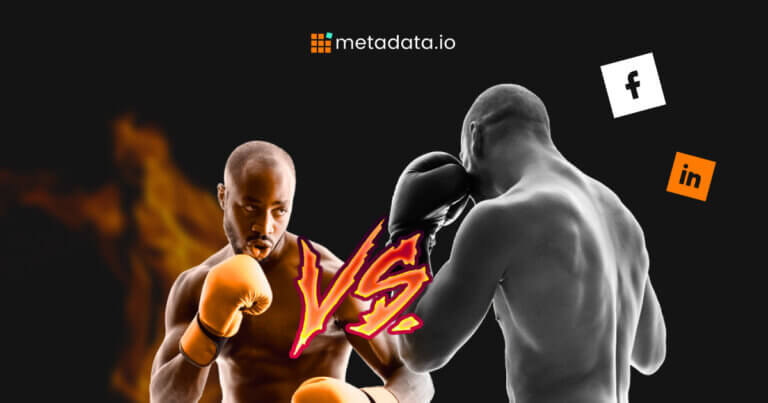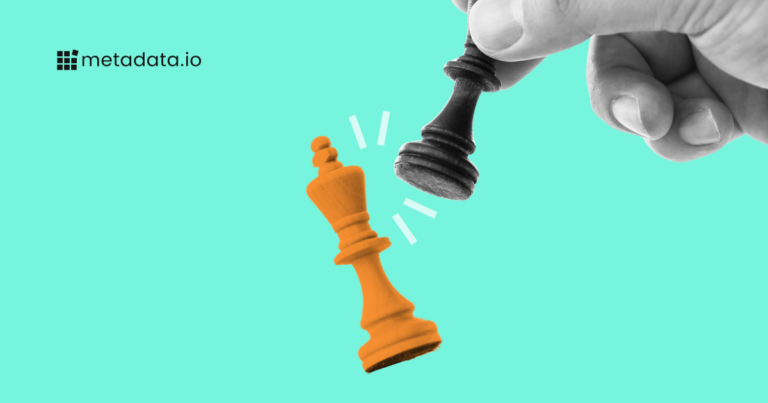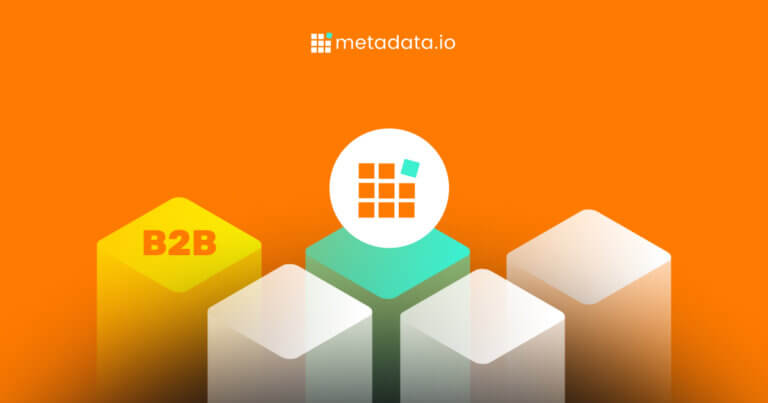Top 13 Facebook Ad Strategies for B2B Marketing Success
Navigating the complex world of Facebook advertising as a B2B marketer can seem daunting, especially when traditional strategies fall short of expectations. The key to unlocking Facebook’s potential for B2B success lies in understanding and implementing effective strategies.
Let’s dive into the top 13 Facebook advertising strategies for B2B teams.
1. Start with Crystal Clear Campaign Goals
The foundation of any successful B2B Facebook advertising campaign begins with setting precise and well-defined objectives. Rather than aiming to “generate more leads,” specify what you want to achieve and by when.
- Establish SMART Objectives: Define goals that are Specific, Measurable, Achievable, Relevant, and Time-bound to guide your campaign effectively.
- Align with Business Strategy: Ensure your campaign objectives contribute directly to your overall business goals, such as creating demand and scaling your pipeline, for cohesive marketing efforts.
- Set Measurable KPIs: Identify key performance indicators like lead generation, conversion rates, or cost per acquisition to track and measure success.
Your objectives should guide every aspect of your campaign strategy, from ad creation to audience targeting and budget allocation.
2. Dive Deep into Your Professional Audience’s Mindset
Effective B2B Facebook advertising requires a profound understanding of your professional audience. While Facebook is primarily a personal platform, you can still reach professionals by tailoring your approach.
- Utilize Audience Insights: Leverage Facebook Audience Insights to gather valuable data about your target audience’s demographics, interests, and behaviors.
- Segment Decision-Makers: Create distinct targeting strategies for different roles, such as IT managers and C-level executives, tailoring content to their specific needs and concerns.
- Adapt to Personal Platform Dynamics: Bridge the gap between Facebook’s personal nature and professional messaging by understanding how your audience interacts on the platform.
3. Craft a Compelling Content Strategy that Engages
Your content strategy must bridge the gap between Facebook’s personal environment and your professional messaging.
- Showcase Real-World Solutions: Utilize case studies to demonstrate how your products or services solve real business challenges.
- Provide In-Depth Insights: Use AI writing tools to speed up the creation of whitepapers and eBooks that talk about industry trends and provide valuable information.
- Visualize Complex Data: Create infographics to present complex information in an easily digestible format.
- Leverage Video Content: Use videos for product demonstrations, customer testimonials, or thought leadership insights.
4. Harness Advanced Targeting Techniques for Precision
Advanced targeting techniques enable marketers to reach decision-makers with accuracy.
- Leverage Professional Data: Go beyond basic demographics by incorporating job titles, industries, and company sizes into your targeting.
- Use Interest and Behavior Targeting: Target users based on their professional interests, online behaviors, engagement patterns. Use advanced audience targeting strategies to do so.
- Implement Custom Audiences: Upload your own customer lists to create Custom Audiences for more personalized targeting.
This sophisticated matching ensures your ads reach the right audience at the right time.
5. Adopt Professional Profile Matching Technologies
Professional profile-matching technology aggregates and analyzes data from multiple sources to create comprehensive profiles of potential customers.
- Enhance Targeting Accuracy: Use machine learning algorithms to continuously refine matching accuracy by identifying patterns in successful customer profiles.
- Incorporate Intent Signals: Integrate intent data to identify and target potential customers who are actively researching solutions.
- Improve Campaign Performance: Achieve increased qualified leads and improved performance by targeting based on professional characteristics and buying patterns.
This technology elevates your targeting strategy to new heights.
6. Ensure Data Accuracy and Reliability
Data accuracy is crucial for effective B2B targeting. Maintaining high match rates by regularly updating your databases ensures that your targeting decisions are based on current, reliable data.
- Regular Data Refreshes: Keep your contact and company data current to maintain high match rates and reach the right people.
- Integrate Third-Party Data: Enhance your data sets with third-party intent data for deeper insights into buyer behavior.
- Monitor Data Quality: Continuously monitor and clean your data to eliminate outdated or incorrect information.
7. Implement Account-Based Marketing (ABM) Strategies
Account-Based Marketing (ABM) focuses marketing efforts on high-value accounts, making it particularly valuable for complex B2B sales cycles involving multiple stakeholders.
- Personalize Campaigns: Develop tailored campaigns for specific target accounts to increase relevance and engagement.
- Identify Key Stakeholders: Focus on decision-makers within target accounts to streamline the sales process.
- Customize Messaging: Use account-specific insights to create messaging that addresses the unique needs and pain points of each account.
8. Optimize Campaigns with Automation
Campaign optimization starts with efficient management, and automation is key to achieving this at scale. Automation eliminates time-consuming manual processes through AI-driven solutions.
- Automate Audience Segmentation: Use AI to dynamically segment audiences based on real-time behavior and engagement.
- Adjust Budgets Automatically: Implement performance-based budget adjustments to allocate funds where they are most effective.
- Generate Real-Time Insights: Utilize tools that provide real-time reporting and insights generation for quick decision-making.
9. Continuously Test and Refine Your Approach
Effective campaign optimization relies on testing. Implement systematic A/B testing and multivariate testing to identify the most effective campaign elements.
- Compare Ad Variations: Test different ad copies, visuals, and calls to action to see what resonates best.
- Experiment with Audiences: Test multiple audience segments simultaneously to discover new opportunities.
- Evaluate Ad Formats: Try various ad formats like image ads, video ads, or carousel ads to determine effectiveness.
- Analyze Timing: Assess performance during business hours versus off-hours to optimize scheduling.
10. Measure Success with Analytics and ROI Tracking
Understanding which metrics matter and how to measure them effectively is crucial for optimizing your campaigns and demonstrating real business value.
- Focus on Key Metrics: Track Click-Through Rate (CTR), Conversion Rate, Cost Per Lead (CPL), and Customer Acquisition Cost (CAC).
- Implement Funnel Reporting: Use deep funnel reporting to monitor leads through the entire sales process.
- Utilize Advanced Analytics Tools: Employ tools that offer real-time data tracking, customizable dashboards, and automated reporting.
This data-driven approach ensures every dollar spent contributes meaningfully to your business objectives.
11. Use Facebook Retargeting to Re-Engage Prospects
Retargeting allows you to reconnect with users who have previously interacted with your brand but have not yet converted.
- Set Up Custom Audiences: Create Custom Audiences based on website visitors, email lists, or app users for retargeting efforts.
- Personalize Messaging: Tailor your ads to address the specific interests or actions of users who have engaged with your content.
- Implement Frequency Caps: Use frequency caps to prevent ad fatigue and maintain positive engagement with your audience.
Retargeting can significantly improve conversion rates by keeping your brand top-of-mind.
12. Incorporate Facebook Lead Ads for Seamless Lead Capture
Facebook Lead Ads simplify the process of collecting contact information from potential leads directly within the platform.
- Streamline Data Collection: Use pre-filled forms to make it easy for users to submit their information without leaving Facebook.
- Offer Valuable Incentives: Provide eBooks, whitepapers, or exclusive content in exchange for contact details to encourage sign-ups.
- Integrate with CRM Systems: Sync lead data directly with your Customer Relationship Management system for immediate follow-up.
13. Use the Meta Pixel for Conversion Tracking and Optimization
The Meta Pixel is a powerful tool that tracks user interactions on your website and attributes them to your Facebook advertising efforts.
- Track Conversions Accurately: Install the Meta Pixel to monitor actions like purchases, sign-ups, or downloads on your site.
- Optimize Campaigns: Use pixel data to create Custom Audiences, optimize for conversion events, and improve ad relevance.
- Measure ROI Effectively: Gain insights into how your ads influence user behavior and contribute to your bottom line.
Use Metadata.io’s Automation Tools for a Strategy Boost
Navigating the complexities of Facebook advertising can be challenging, especially when faced with the pressure to deliver impactful marketing outcomes without wasting valuable budget.
Metadata.io’s marketing platform offers a solution to these challenges by providing precision targeting and efficient campaign management tailored for B2B marketers.
- Automate Targeting and Segmentation: Metadata.io uses AI and machine learning to automate audience targeting, ensuring your ads reach the most relevant professionals without manual guesswork.
- Optimize Ad Spend: With intelligent budget allocation and real-time optimization, you can transform your ad spend into measurable results, maximizing ROI and minimizing wasted budget.
- Simplify Campaign Management: Metadata.io streamlines the entire campaign process, from creation to execution, reducing the time and resources needed to manage complex advertising strategies.
- Alleviate Marketing Pressure: By automating tedious tasks and providing actionable insights, Metadata.io allows you to focus on strategic initiatives, alleviating the pressure to constantly monitor and adjust campaigns.
Looking Ahead
Success in B2B Facebook advertising will depend on your ability to balance personalization with privacy, automation with strategic oversight, and scale with precision. By implementing these strategies, you’ll be well-equipped to make your Facebook ad strategies even more effective.
Transform your marketing strategy with Metadata.io — drive more leads, optimize campaigns, and scale your results effortlessly. Book an intro today!


